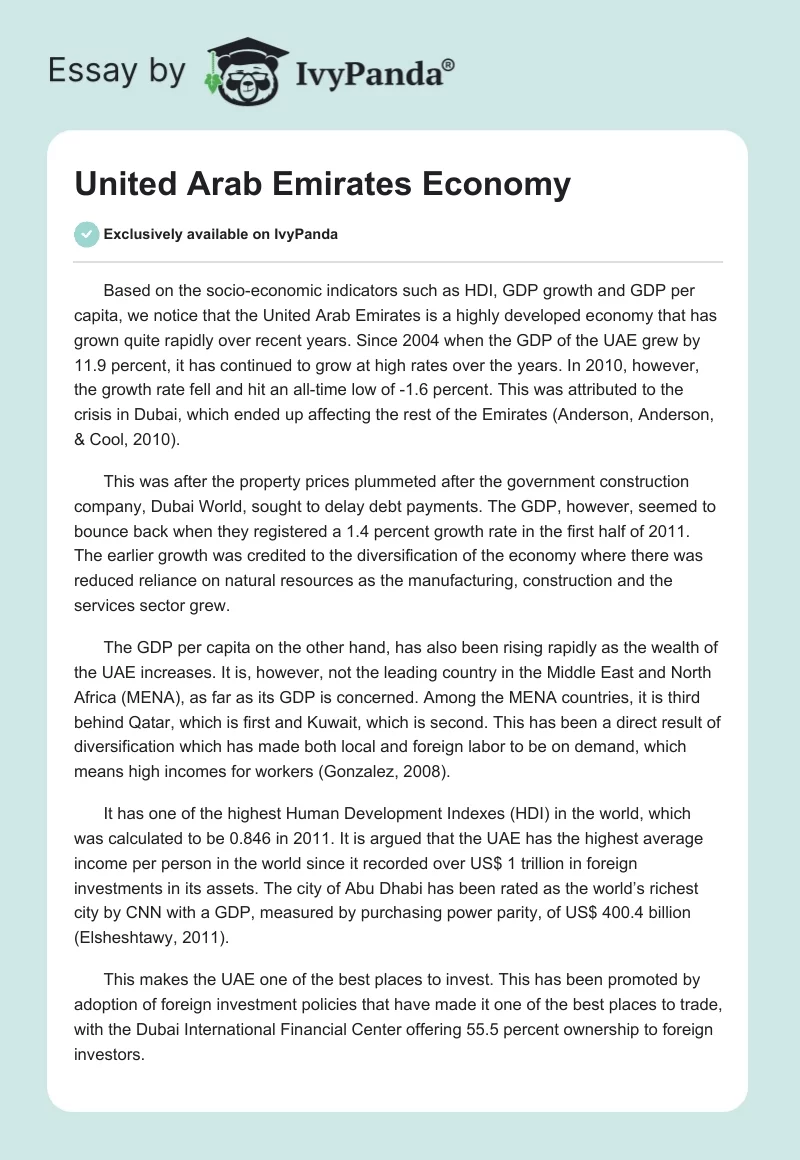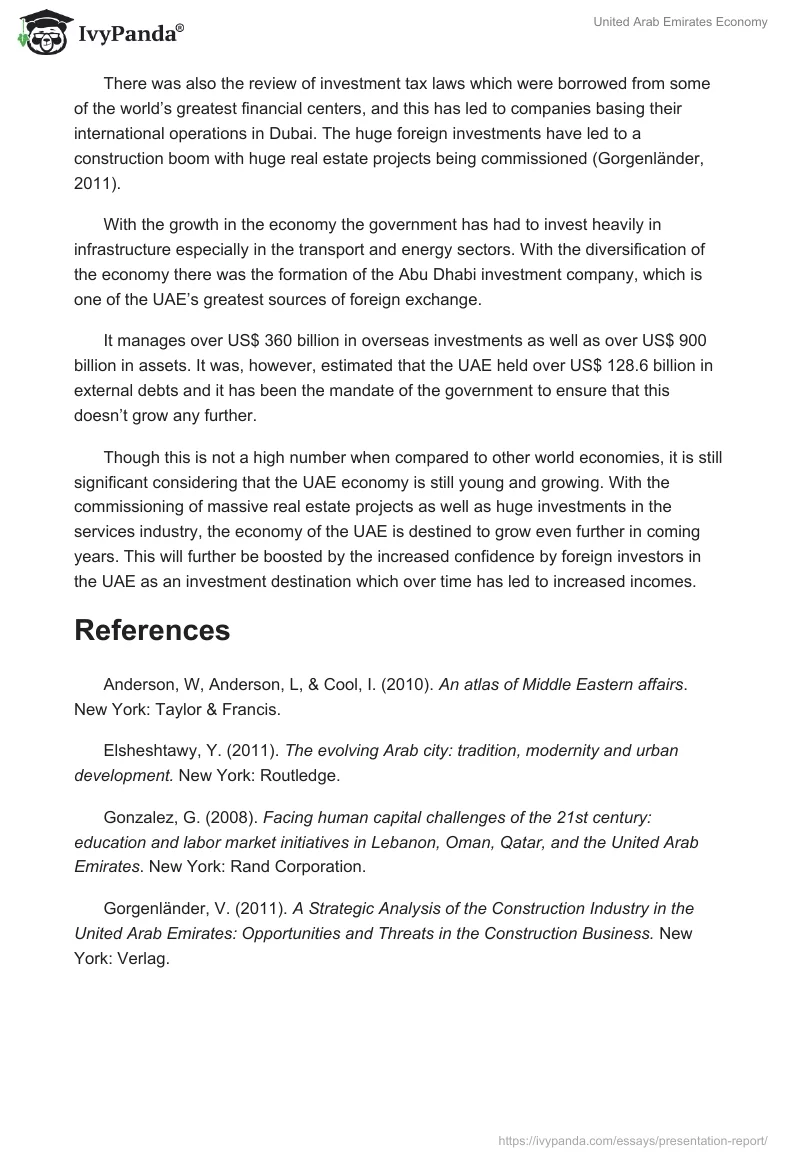Based on the socio-economic indicators such as HDI, GDP growth and GDP per capita, we notice that the United Arab Emirates is a highly developed economy that has grown quite rapidly over recent years. Since 2004 when the GDP of the UAE grew by 11.9 percent, it has continued to grow at high rates over the years. In 2010, however, the growth rate fell and hit an all-time low of -1.6 percent. This was attributed to the crisis in Dubai, which ended up affecting the rest of the Emirates (Anderson, Anderson, & Cool, 2010).
This was after the property prices plummeted after the government construction company, Dubai World, sought to delay debt payments. The GDP, however, seemed to bounce back when they registered a 1.4 percent growth rate in the first half of 2011. The earlier growth was credited to the diversification of the economy where there was reduced reliance on natural resources as the manufacturing, construction and the services sector grew.
The GDP per capita on the other hand, has also been rising rapidly as the wealth of the UAE increases. It is, however, not the leading country in the Middle East and North Africa (MENA), as far as its GDP is concerned. Among the MENA countries, it is third behind Qatar, which is first and Kuwait, which is second. This has been a direct result of diversification which has made both local and foreign labor to be on demand, which means high incomes for workers (Gonzalez, 2008).
It has one of the highest Human Development Indexes (HDI) in the world, which was calculated to be 0.846 in 2011. It is argued that the UAE has the highest average income per person in the world since it recorded over US$ 1 trillion in foreign investments in its assets. The city of Abu Dhabi has been rated as the world’s richest city by CNN with a GDP, measured by purchasing power parity, of US$ 400.4 billion (Elsheshtawy, 2011).
This makes the UAE one of the best places to invest. This has been promoted by adoption of foreign investment policies that have made it one of the best places to trade, with the Dubai International Financial Center offering 55.5 percent ownership to foreign investors.
There was also the review of investment tax laws which were borrowed from some of the world’s greatest financial centers, and this has led to companies basing their international operations in Dubai. The huge foreign investments have led to a construction boom with huge real estate projects being commissioned (Gorgenländer, 2011).
With the growth in the economy the government has had to invest heavily in infrastructure especially in the transport and energy sectors. With the diversification of the economy there was the formation of the Abu Dhabi investment company, which is one of the UAE’s greatest sources of foreign exchange.
It manages over US$ 360 billion in overseas investments as well as over US$ 900 billion in assets. It was, however, estimated that the UAE held over US$ 128.6 billion in external debts and it has been the mandate of the government to ensure that this doesn’t grow any further.
Though this is not a high number when compared to other world economies, it is still significant considering that the UAE economy is still young and growing. With the commissioning of massive real estate projects as well as huge investments in the services industry, the economy of the UAE is destined to grow even further in coming years. This will further be boosted by the increased confidence by foreign investors in the UAE as an investment destination which over time has led to increased incomes.
References
Anderson, W, Anderson, L, & Cool, I. (2010). An atlas of Middle Eastern affairs. New York: Taylor & Francis.
Elsheshtawy, Y. (2011). The evolving Arab city: tradition, modernity and urban development. New York: Routledge.
Gonzalez, G. (2008). Facing human capital challenges of the 21st century: education and labor market initiatives in Lebanon, Oman, Qatar, and the United Arab Emirates. New York: Rand Corporation.
Gorgenländer, V. (2011). A Strategic Analysis of the Construction Industry in the United Arab Emirates: Opportunities and Threats in the Construction Business. New York: Verlag.


